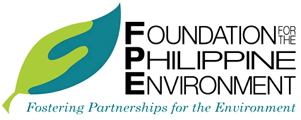News
Arakan Corridor Project Sheltering People and Wildlife
Posted on March 5, 2013
“The rainforestation farming technology was chosen and developed under the assumption that a farming system in the humid tropics becomes increasingly more sustainable the nearer it is in its species composition and physical structure to the local rainforest ecosystem.” So says a study conducted by Euronatur University. In other words, “Rainforestation farming is a sustainable farming system used as a strategy for forest restoration using native or indigenous tree species in combination with agricultural crops.” Thus writes Dr. Paciencia Milan, former trustee of the Foundation for the Philippine Environment (FPE).
The Arakan Valley in the municipality of Arakan in the province of North Cotabato was chosen for just such a rainforestation approach by FPE and the Philippine Eagle Foundation, Inc. (PEFI). It has three remaining forest fragments, with one almost entirely residual and two largely old growth, totaling about 2,453 hectares and covering about 4% of the total municipal land area, that PEFI planned to connect to form a “corridor” of forest some 28 kilometers in length. This would allow the movement of bird and animal species between these three forest fragments, especially the powerfully symbolic Philippine eagle, thus widening their feeding grounds and improving their genetic diversity by permitting mate selection from a broader gene pool. Similar effects were also predicted for the eagle’s prey and for their habitat. Furthermore, in restoring the habitat of one flagship species and its prey through rainforestation, that is, using forest species native to the area, the project would result in the protection and enhancement of biodiversity.
Back in 1992, FPE had supported a study on the forest corridor concept, which served as the platform for PEFI to conceptualize a project to connect degraded forest ecosystems in the mountain ranges of Mounts Pantaron and Pulangi in Bukidnon and Mount Apo in Davao with funding from the UNDP-Global Environment Facility. However, the target area was deemed too large and beyond the funding limit of the facility’s medium sized program window. Thus, FPE piloted a smaller and more manageable scale of “forest corridoring” in 2000, covering forest patches in Mounts Apo and Mahuson, with support from FPE. Six years later, the project was expanded northward to include the old growth forest in Mount Sinaka, as well as the Kabalantian-Binoongan-Kulaman area, both of which form the ancestral domain of the Manobo tribe. Today, the project also rehabilitates 87 hectares of idle grassland.
As early as 2006, FPE encouraged PEFI to employ rainforestation farming as its strategy to restore the degraded forests in the corridor. While using native species for forest restoration, the project then also incorporates the planting of various fruit trees and non-timber forest products as means of diversifying sources of income and food for people living in the area. Up to 10% of the trees planted are fruit-bearing species. Subsequently, an increase in the productivity and income of project stakeholders is realized.
With six rivers originating in Arakan, all of which discharge into the Pulangi river in the north, and 11% of the land considered flood prone and subject to erosion, the project also encourages protection of soil fertility and reduction of erosion, as well as mitigates against the threat of flooding.
In the course of implementation of the project, efforts to utilize the Clean Development Mechanism (CDM) under the Kyoto Protocol were initiated in late 2007, to give the local communities an opportunity for financial returns to their project. However, due to the laborious process the mechanism entails, the partner decided to shift to the voluntary market mechanism. CDM or voluntary market notwithstanding, the partners – the local indigenous peoples and farmer communities, their supporters among the LGU, the youth and academe, PEFI, and FPE – continue to work towards a forest corridor enlivened by native species of flora and fauna, with the human communities provided food and livelihood, through their rainforestation efforts.

 DISPLAY CALENDAR
DISPLAY CALENDAR
 Read Policy Briefs
Read Policy Briefs
 View Our Partners
View Our Partners
 Access Grants MIS
Access Grants MIS
 Login to Webmail
Login to Webmail